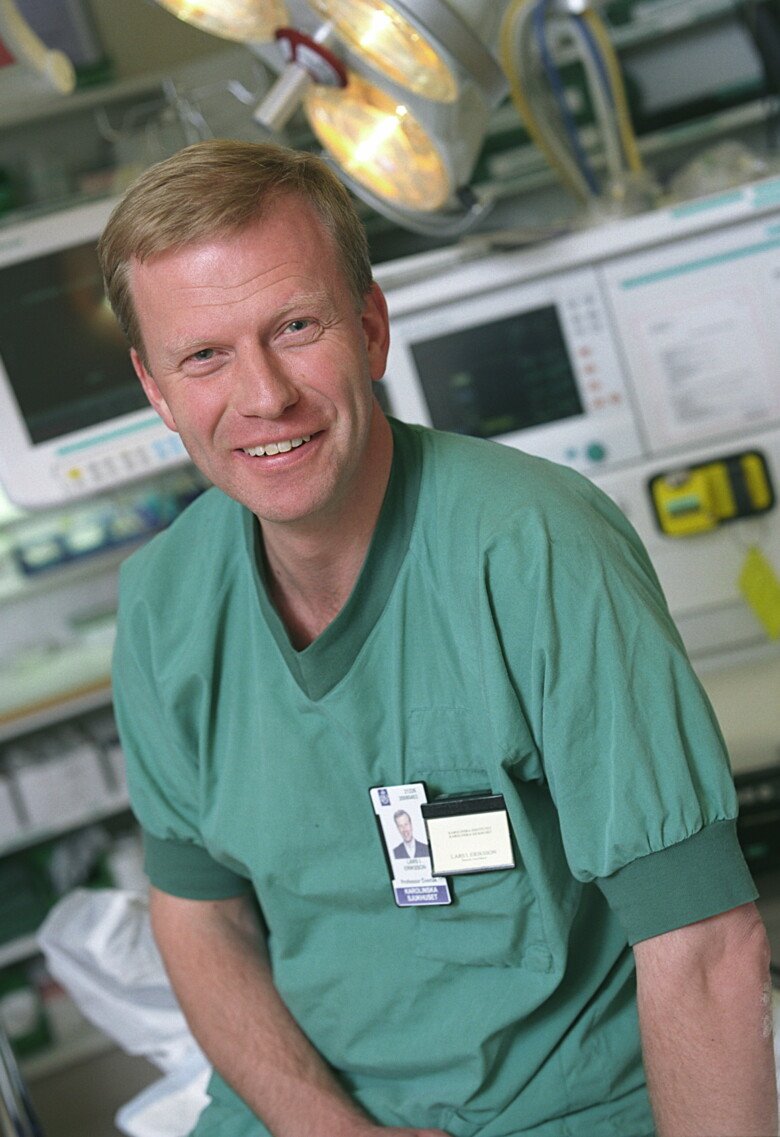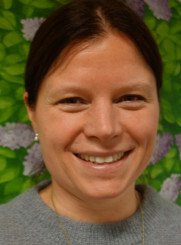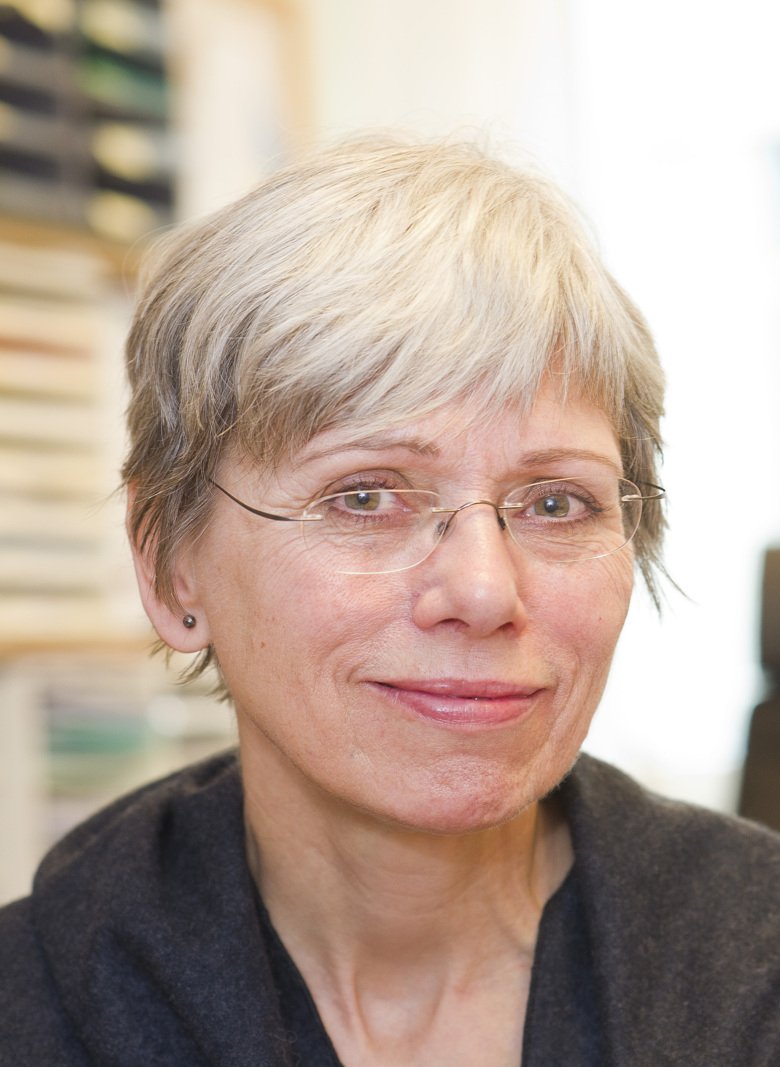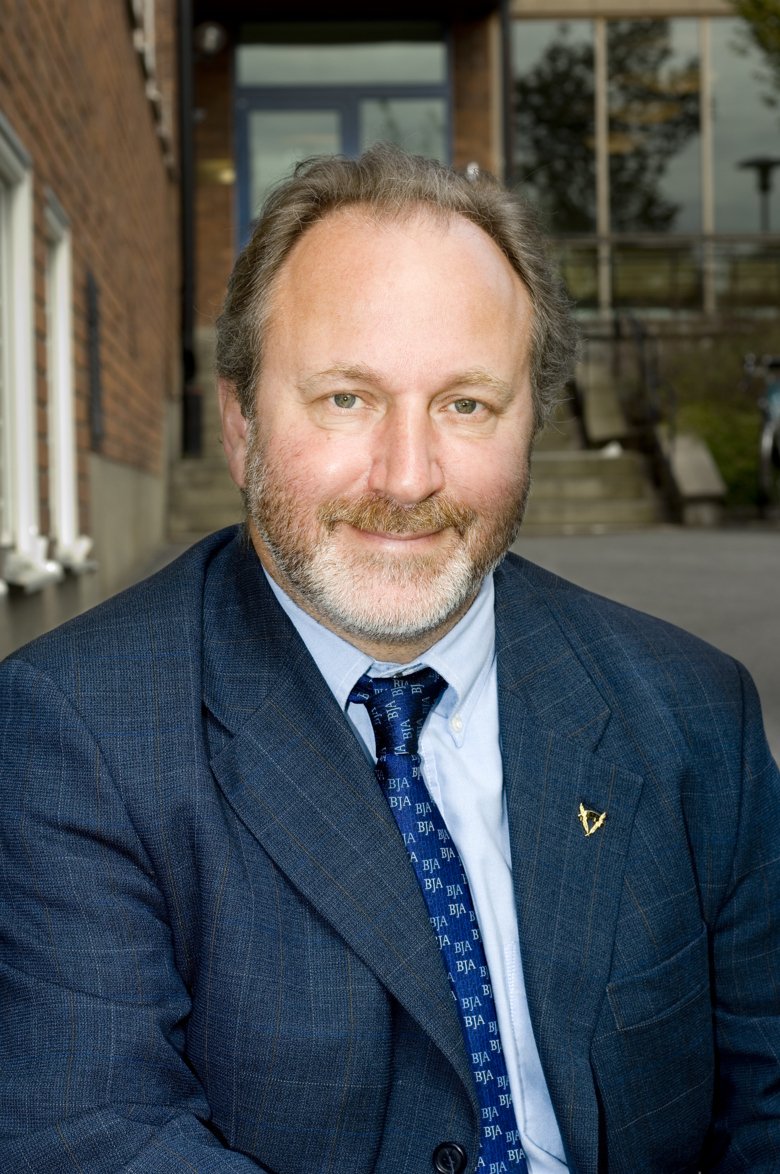The black out that revolutionized medicine
Every year some 700,000 operations are performed in Sweden. Operations have become a matter of routine, and it is considered a matter of course to undergo surgery with anaesthesia without experiencing either pain or discomfort. Some tenderness around the incision, and a few days of sick leave is what many expect as a normal process. However, this has not always been the case.
Text: Fredrik Hedlund, first published in Medical Science No. 1, 2014.
In fact, the art to sedate and numb a patient during surgery - or anaesthesia as it is known from the Greek “without sensation” - is a relatively new skill. While there is evidence that humans have performed different kinds of surgical procedures as early as three thousand years before the birth of Christ, the first successful anaesthesia was carried out as late as October 1846.
A dentist in Boston, USA, introduced ether as an anaesthetic and much to the sceptical surgeon's surprise, the patient lie completely still and felt no pain as the surgeon removed a tumour from the patient’s neck. Normally six strong men were required to hold the patient down during the operation. Success was immediate. News of this fantastic method spread around the world at breakneck speed and before the end of the year, a number of surgeons in the USA and Europe had used ether as an anaesthetic However, due to its side effects and its flammability ether was quite quickly replaced by chloroform.
For some considerable time it was the caretaker or auxiliary nurse who, under the supervision of the surgeon, was responsible for giving patients anaesthesia, which gave highly mixed results. Nevertheless, it was not until 1927 before the world's first anaesthesiologist was appointed in the USA and to be responsible to anaesthetise patients became a separate medical professional. About ten years later, the Swedish doctor Torsten Gordh travelled to the USA to learn from the first anaesthesiologist Professor Ralph Waters, and on his return in 1940 he was named Sweden's first anaesthetist at the then newly opened Karolinska Hospital in Solna.
Over the 70 years that anaesthesiology has existed in Sweden it has developed tremendously. Yet it is still a young science where, perhaps, the most fundamental piece of knowledge is still missing.

“Today, we cannot exactly explain how unconsciousness occurs. We know more or less where in the brain the different anaesthetics have effect, but we are still searching for the exact mechanisms that regulate wakefulness and unconsciousness,” says Lars I. Eriksson, Professor of Anaesthesiology and Intensive Care at the Department of Physiology and Pharmacology, Karolinska Institutet and Senior Physician at Karolinska University Hospital.
In spite of the fact it is possible to carry out operations today that surgeons some 30 years ago could only dream of. The widespread medical and technical advances in anaesthesia have been a prerequisite for developments in surgery and today the specialty is a question of much more than in the early days.
“Anaesthesia was then primarily a way to put people in a state of artificial unconsciousness before the operation. Today, along with nurses and assistant nurses in anaesthesia and surgery, we are responsible for an advanced perioperative activity, which means that we work as much outside as inside the operating theatre,” says Lars I. Eriksson.
Nowadays, anaesthesiologists meet patients before surgery to identify factors that, among others, they need to pay particular attention to. This may be a question of identifying risk patients who may need special monitoring or a special anaesthesia during surgery, but also patients who need different care with increased monitoring, intensive care and special pain relief after surgery.
“We also see that we need to work more and more with what happens to the vital functions. Not just during the first few hours, but throughout postoperative care where we ensure that the patient heals and regains normal organ function. Here interest in our ability to make a difference has entered a new phase. Initially it was all about waking up and now we look at the first, second and third day after surgery and even further ahead,” says Lars I. Eriksson.
Patients suffering from sleep apnoea are extra sensitive
This has also led to new risk groups being identified. Recently it has been discovered that people who suffer from sleep apnoea, interrupted breathing during sleep, have an increased risk of complications. People with sleep apnoea suffer from frequent pauses in breathing at night and can be subjected to hypoxia up to 50 times per hour during sleep. Ultimately this leads to disturbed respiratory control. However, it is not during the actual surgery that the risk of complications is at its greatest.
“The airways are kept open by using breathing tubes or specially designed face masks during the operation itself. When the patients then wake up the equipment has been removed, but they still feel the residual effects of the anaesthetics. This means the airways can more easily collapse and cause snoring and apnoea in the recovery room or on the ward,” says Malin Jonsson Fagerlund, a Researcher at the Department of Physiology and Pharmacology, Karolinska Institutet and Anaesthesiologist at the Karolinska University Hospital.
There are also studies that show that people who suffer from sleep apnoea are especially sensitive to analgesics such as morphine, which means that it may be difficult to administer pain relief after surgery. However, knowledge of sleep apnoea as a risk factor after surgery is so new that there are still no dosage recommendations for patients who suffer from it,” adds Malin Jonsson Fagerlund. Something that can easily lead to overdosing with respiratory problems, or at worst, respiratory arrest as a result. Even so, as long as the patients are in recovery, they are kept under observation by monitors that signal as soon as they do not breathe correctly. The risks of complications are actually greater later in the process when the patients have been transferred to an ordinary ward or have been discharged.

“They then run an increased risk of low oxygenation, especially at night when they sleep and the airways collapse,” says Malin Jonsson Fagerlund.
The consequences are rarely life-threatening, but more often result in more time spent in hospital or intensive care due to respiratory problems or pneumonia.
“Anaesthetic agents mean that patients do not have the ability to breathe or cough properly whereby the risk of inhaling the gastric content and getting pneumonia increases,” explains Malin Jonsson Fagerlund.
She is currently engaged in several studies of patients with sleep apnoea in order to ascertain how they are affected by anaesthesia and to discover the best possible postoperative care. But also to map how common sleep apnoea is among surgical patients. One of the biggest problems is the fact that most people who suffer from sleep apnoea do not know it themselves. It is a very under diagnosed illness.
“We will therefore conduct a study to examine how common it is by screening surgical patients for sleep apnoea and then follow them up after surgery,” she adds.
Malin Jonsson Fagerlund believes that until there is more knowledge available, patients with suspected sleep apnoea syndrome must be treated as high-risk patients, in the same way as a patient with severe heart disease. This means that the patient must be anesthetised carefully by an experienced and knowledgeable anaesthesiologist. Pain-relief during the postoperative period must then be administered with care using more short-acting medicines, and as far as possible without morphine or similar agents and with even more time in the recovery room. Nevertheless, she is doubtful whether these recommendations will actually be observed at hospitals in Sweden. Awareness of the increased risks after anaesthesia for sleep apnoea patients is still so new that it has not yet spread to so many anaesthesiologists.
In contrast, one effect that can affect anyone after an operation is the impact on the cognitive ability - that is to say, the ability to remember, learn and concentrate - which many patients experience several days or weeks after the procedure.
“Examples include failure to remember your door code or the information received at the hospital when being discharged, or the ability to concentrate on tasks when you return to work,” says Lars I. Eriksson.
Long-term effects on the brain
For most patients, this effect on the brain is short lived, but the problems become much more pronounced and sustained with age. In terms of patients over 60 years, one in ten still experience difficulties three months after a major surgery.
As the percentage of older people undergoing surgery is increasing every year, so does the number of patients with this type of cognitive effect, which also becomes a problem for society. Lars I. Eriksson and his team have directed their research to try to find out what causes these long-term effects on the brain and how they can be prevented.
The first issue has been whether the failure depends on the anaesthetic or the surgery and where the researchers have concluded that it is largely due to the surgical trauma. Of course the next question will then be how does a surgical injury far out in the body affect the brain centrally?
Lars I. Eriksson describes how they have found evidence that tissue damage caused by surgery triggers inflammatory signal substances, called cytokines that are mobilised by other immune cells called macrophages. Together these have managed to pass the normally protective blood brain barrier, into the brain and spread the signal.
“While this has a negative effect on brain function, the signal is biologically relevant as it gives the typical feeling of illness that says that you should not be up and about working, but rather be still and heal,” notes Lars I. Eriksson.
However, on some individuals the effect remains in the brain for several months and on others even up to a year. Something that is not biologically relevant and which Lars I. Eriksson hopes to do something about soon.
“Our on-going studies are giving us hope that soon we will find therapeutic models where we can prevent disturbances in brain function after surgery, while still preserving the relevant signals,” he adds.
Older patients respond differently
It is not just the risk of cognitive failure that is the greatest for the oldest patients. As an increasing number of elderly are being operated on, it is becoming apparent that it is not always possible to use the same methods as on younger patients.

This is something Sigga Kalman bitterly experienced in her latest study. She is a Professor of Anaesthesiology and Intensive Care at Karolinska Institutet and Senior Physician at the Karolinska University Hospital. Her idea was to use the most modern methods – developed from studies on middle-aged people – on patients undergoing hip fracture surgery.
This concerns patients who currently have an average age of 85 years. The treatment method she employed was a type of target-oriented anaesthesia where respiration, circulation, blood pressure, pulse, fluid levels, and more controlled to specific values. The idea was good. Why not give the oldest patients as good care as the young? However, it did not work at all as intended.
“When we used the same methods to administer anaesthesia, to manage blood pressure and stimulate the heart's work as used on younger patients, we saw that the elderly did not actually feel so good from it,” says Sigga Kalman.
The study was a failure, but new insight grew from the experience.
“The conclusion we have drawn is that the elderly react in a completely different way in terms of fluids and medicines,” she says.
For example, younger patients are routinely given fluid if the blood pressure drops in connection with anaesthesia, but this did not work at all well on the elderly, only one in ten managed it.
“The heart and circulation in older people cannot adjust in the same way as in younger persons. Where a young heart can expand and pump a greater volume during exertion, an old heart is rigid and cannot manage it,” says Sigga Kalman.
Now she is examining how, in a safe manner, you can identify the one tenth of the elderly who can actually cope with the supply of fluids and secondly how to treat the other nine-tenths of the patients. Similarly, the dosages of anaesthetics and other pharmaceuticals need to be reviewed. Older people need much smaller quantities of pharmaceuticals compared with younger people, at the same time as the effect both starts and stops slower. This makes it easy to overdose, as the response to treatment takes longer.
“At both extremes of life, at the beginning and at the end, we humans are different and more sensitive. Thus, we need to be much more careful with them,” says Sigga Kalman.
If our knowledge of how the elderly react differently to the anaesthesiologists’ treatment is relatively newfound knowledge, it is not as new at the other end of life. Doctors have operated on extremely small children for quite some time, which means our knowledge of them is greater.
Consequently, we know that young children often need to be treated differently from adults. However, the instinctive notion that young children are very sensitive and thus require smaller quantities of anaesthetics and analgesics compared with both adults and the elderly has found to be completely wrong. Young children often need significantly greater amounts of pharmaceuticals per kilogram of body weight than adults. This is due to some extent to the difference in fluid distribution, explains Per-Arne Lönnqvist, Adjunct Professor of Paediatric Anaesthesia and Intensive Care at Karolinska Institutet and Senior Physician at the Astrid Lindgren Children's Hospital, Karolinska University Hospital.
“An adult consists of 60 per cent water, while for a premature child the percentage of water can be 85 per cent and for a very premature infant the figure is 90 per cent water, and it is distributed differently in the body. This means water-soluble medicines need to be given in higher doses to small children, while medicines that are fat soluble sometimes need to be reduced,” adds Per-Arne.
However it is not only the very smallest children who can surprise you when it comes to dosage.

“When it comes to anaesthetic gases, children in the three to five age range need a significantly higher proportion of gas,” says Per-Arne Lönnqvist.
Yet there are also pharmaceuticals where the opposite applies. It may then be the case that all functions in the body have not really come into place yet. One example is the liver, which is the organ that cleans the body from foreign substances. Just a few days after birth, the liver functions as for an adult for some substances, but not for others.
“Morphine for example is broken down in adults to a product that lacks activity. In young children these enzyme systems have yet to mature and another degradation route takes over, which leads to a degradation product that is active, and which is at least as effective as morphine itself,” says Per-Arne Lönnqvist. If you are unaware of this it is easy to overdose the morphine, which can lead to respiratory arrest and death.
Children and pharmaceuticals
Despite small and larger children often reacting so unpredictably to pharmaceuticals compared to adults, it is a question that pharmaceutical companies have rarely applied resources to in order to illuminate. The knowledge available about how different pharmaceuticals work on small children is, in most cases, something that doctors have had to find out for themselves.
“No more than 20 per cent of the pharmaceuticals that we use in anaesthesia and intensive care for children have an indication in FASS (Swedish National Formulary) and are approved for use on children. This is mainly because children form a very small group of patients that do not generate any significant revenue for the pharmaceutical companies,” says Per-Arne Lönnqvist.
Since 2006, however, the pharmaceutical companies must study how their new pharmaceuticals work on children in order to be approved. Yet for all the pharmaceuticals approved before this there is usually no knowledge. Per-Arne Lönnqvist experiences the situation as extremely unsatisfactory as it means paediatric anaesthesiologists frequently have to experiment somewhat in the treatment of their patients. It is therefore perhaps not surprising that Per-Arne Lönnqvist’s research is mainly focused on different clinical and pharmacological issues close to the patients.
One such issue concerns administering sedatives prior to surgery. Many children are anxious and afraid before a surgery. Doctors in a large number of countries solve this by administering the sedative Dormicum, which contains the active substance midazolam. The problem is that it is now known that the drug removes only the memory image of an event, but not the experience of it, which in turn means that children remember the discomfort, associate this to the hospital, but cannot remember why.
“This means you cannot process the experience, you need to know why you were frightened. We are many who are highly critical of the use of the agent in this way on children,” says Per-Arne Lönnqvist.
He can now proudly proclaim that for some time now Karolinska University Hospital has a completely midazolam-free Paediatric Anaesthesiology Clinic. Something that they have achieved thanks to two things.
The Paediatric Anaesthesiology Clinic has well-developed pre-operative activities where children and parents can come to visit a couple of weeks prior to the procedure and meet the doctors, receive information, get the look and feel of objects, meet clowns and get tips about narkoswebben.se, which is a proprietary information site aim towards children.
“If you have good information then a great deal less sedative is required, while a large number do not even need anything,” says Per-Arne Lönnqvist.
For those children who still find it uncomfortable, a different drug is used, which according to Per-Arne Lönnqvist, is better - alpha-2 agonist Catapressan, which contains the active substance clonidine.
“In addition to the children being calm, they are also sedated, or tired, in a much more natural way as clonidine acts on the wakefulness centre in the brainstem,” says Per-Arne Lönnqvist.
Per-Arne Lönnqvist has taken the initiative to the research to find out how many different drugs are absorbed, work and are broken down in small children. He has also introduced the use of ultrasound to see that local anaesthetic is injected exactly into the right place on small children as well as the method to inject local anaesthetic directly into the surgical wound when the children are as small that it is impossible to block pain signals in the nerves.
Yet ideally, he would like to see pharmaceutical companies produce information about how their agents worked and can be used on small children from the start.
“It is very disconcerting that there is no knowledge about the quantity of a medicine that a child needs to have access to and that we have just have to experiment,” says Per-Arne Lönnqvist.
Facts: Four ways to freedom from pain
-
On the skin
Local anaesthetic ointment that gives a brief anaesthesia in a defined area on the skin. -
In the blood
Intravenously given anaesthesia affects the entire body, sedates the patient and gives a general anaesthetic. -
In the nerves
Nerve blocks and spinal anaesthesia numbs the part of the body to be operated on. -
In the air inhaled
Inhalation of anaesthetic gas affects the entire body, sedates the patient and gives a general anaesthetic.
Anaesthetic web
Information site directed towards children who learn things that may be useful to know prior to surgery with the help of films, puzzles and games. Developed at Karolinska University Hospital, but the information is given in general terms. Available in Swedish, English, Spanish and Arabic as well as in text versions in another 23 languages. narkoswebben.se
